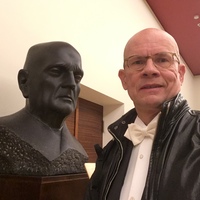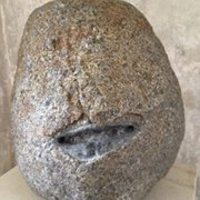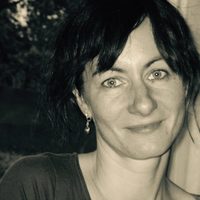
Tomi Mäkelä
My background is Finnish, but the influence of the Viennese culture (there I studied) and later my private and professional life in Germany (Berlin, Essen, Cologne, Berlin, Magdeburg, Halle) has become dominant. I am also very much a piano player still and like to think about music and culture from a performer's point of view. Music history mixed with cultural musicology has become the main field of my activities, as it was theory in the earlier days. Northern European topics (including not only Finnish, Swedish, Norwegian and Danish, but also Estonian, Karelian and Russian) I often deal with. My family background is Sourthern Karelian and Mid-South Finnish.
less
Related Authors
Ilkka Oramo
Sibelius Academy
Marianne Broermann
Georg-August-Universität Göttingen
Stefan Keym
Leipzig University (Universität Leipzig)
Sebastian Beier
Johannes Gutenberg-Universität Mainz
Helena Tyrväinen
University of Helsinki
Marc Eric Mitzscherling
University of Vienna
InterestsView All (13)








Uploads
Papers by Tomi Mäkelä
Based on a presentation given at the international symposium of the DFG-Graduiertenkolleg ‘Europäische Traum-kulturen’ (University of Saarland, Saarbrücken, 24–25 May 2019): ‘A Gateway to Secret Existences. Dream, Body and Soul in Kaija Saariaho’s Music,’ hosted by Dr Mauro Fosco Bertola.
A fragment for piano in A-flat major (1887), an autograph at the Helsinki University Library (Coll. 0765/1; Figure 1) by Jean Sibelius, which has so far received little attention, serves in the following as an indication of a creative process leading from a vacational inspiration to a sophisticated work for choir and orchestra more than twenty years later. The starting point of the study was the public image of Sibelius as a symphonist improvising on the piano. Before it turned out to be more, the fragment was analysed as a tiny piece in the puzzle, a possible manifestation of a moment musicaux in a warm summer evening. It illustrates the effervesce phantasy of the young artist who did not yet consider himself a full-time composer. E. T. A. Hoffmann’s Kreisleriana as well as poems by the magnificent Swedish poet Viktor Rydberg (1828–1895), August Strindberg’s youth idol that later became an artistic enemy image, are put in relation to the fragment that is – quite spectacularly – revealed as a manifestation of the musical idea that starts the Impromptu for four-part women’s choir and orchestra in E-flat major Op. 19 from 1910 (Figure 2). Not so much the fact that an unpublished idea of 1887 experiences a comeback in a masterpiece of 1910, but the unique character of the idea and its genuine context make up a sensation. The improvisatory style of this idea, 1887 in particular, would legitimate the slightly unusual title Impromptu for a work of its kind (Op. 19). The semantic and cultural context of the idea as it is used 1910 are easy to analyse in regard to the lyrics. They support the interpretation of the original creative context of 1887 that is not positively established. Even if only in terms of a theory, the later context gives the inspiration both a landscape and a cultural identity, also supported by the peculiar graphics of the fragment. Sibelius also used the generic title Impromptu conventionally, for six piano compositions from 1894: Six Impromptus Op. 5, of which No. 5–6 also exist for string orchestra. In addition, the first of the Four Pieces Op. 78 for piano and violin or cello is an Impromptu (1915). A brief overview of Sibelius’ piano work was added to provide context. In addition, Sibelius’ portraits, preferably at the piano, and anecdotes about his pianism are discussed as reciprocal aspects of public imaginary. Sibelius was trained as violinist, but as he grew older he improvised primarily on the piano, from 1915 on his own Steinway, until then on the German upright pianino (Westermayer) of his grandmother.